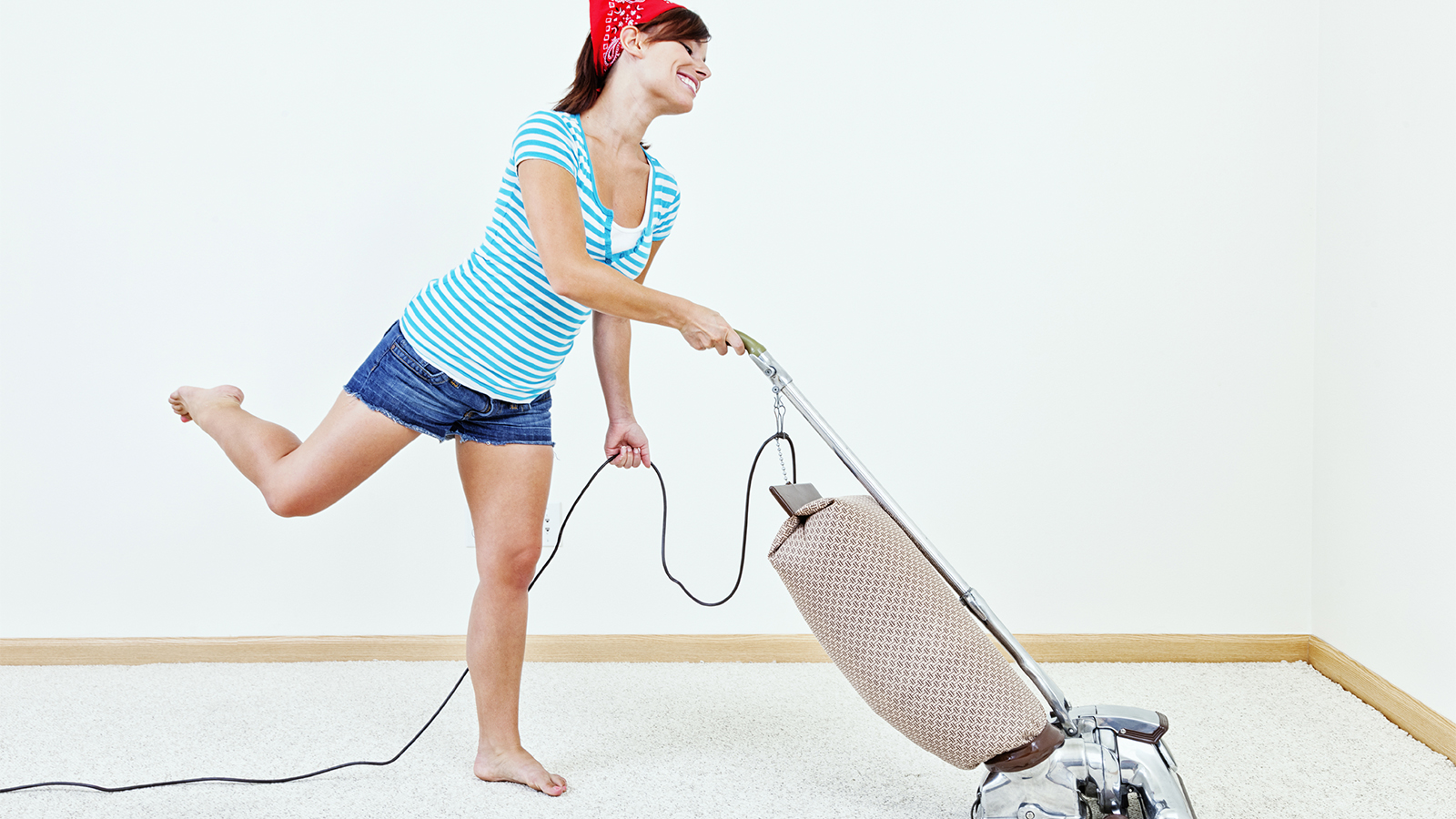Send your question to Umbra!
Q. Any idea which vacuum cleaners are more environmentally friendly? I’m thinking made with postconsumer recycled materials, reusable filters, and low energy use, maybe other factors? Thanks!
Nick,
Concord, N.H.
A. Dearest Nick,
Back in the olden days, all we needed to keep our floors dirt-free was a stick and some bundled straw. Now, we (the carpeted among us, anyway) must rely on electricity and plastic suction machines, some of which cost hundreds of dollars, to get the house ready for company. Oh, the complications of modern life.
But if carpets you have, Nick, then vacuum you must. The three Dirty Ds — dust, dirt, and dog hair – aren’t going to remove themselves from your home. And if you or anyone you live with has asthma or allergies, this chore becomes even more important. So what’s an environmentally conscious housecleaner to do?
It is possible to procure a mechanical carpet sweeper, which looks kind of like a regular vacuum but works by sweeping up debris with rotating bristles. I use the word “works” loosely, though: My weekly allowance used to depend on carpet sweeping, and I can tell you it leaves a lot to be desired in the effectiveness department. (These commenters largely agree with me.) Grandmothers everywhere also once used the old “beat the rug with a stick” trick, but alas, that won’t work for non-movable carpets either.
So we’re left with choosing the best vacuum cleaner we can find. You’ve identified some of the major variables already, Nick: recycled materials, reusable filters, and energy use. To that I’ll add another factor: durability. There are also a few habits you can adopt to maximize the efficiency of your hoover and cut down on your vacuum time.
First, durability: As with any consumer item, the greenest choice is the one that will serve you the longest. On that note, if you already have a serviceable vacuum cleaner, I’d urge you to stick with that one – and even broken vacuums can be repaired. Failing that, you want a model that’s quality enough to last for years (this is where customer reviews and Consumer Reports come in handy).
Vacuums made with partially recycled plastic can also be had (not to plug any particular brand, but Electrolux is a biggie in this space), as can bagless models that feature a cleanable, reusable compartment instead of throwaway bags to collect the detritus from your floor. I must point out, however, that you’ll still need to replace the filters in a bagless vacuum periodically, and emptying them tends to be messier (a concern for those with respiratory issues).
Then there’s the matter of energy use. Most vacs are pretty similar in this regard, with wattages that rank between 1,000 and 1,440 watts. If you spend 15 minutes a week carpet-cleaning, that translates to 1 to 1.4 kilowatt-hours a month. Compare that to 12 kWh per month for a ceiling fan, 75 for a dryer, and 1,450 and up for central air conditioning, and you’ll see the vacuum is perhaps not a top priority for energy savings. Still, it’s worth checking into more efficient models while out shopping.
Once you have your dream vacuum in hand, you can do even more to increase efficiency and slash the time you spend with that sucker switched on: Empty the dust compartment frequently to keep the suction in tip-top shape. Station doormats outside every door and institute a no-shoes policy to stop dirt before it gets tracked into your carpet’s fibers.
Finally, use your judgment: How much time you need to spend vacuuming depends on how much carpet you have, whether you have pets or kids, and whether anyone in the house has a medical need for frequent dust-busting, of course. But unless you share your home with a Clydesdale, I don’t think most of us need to sink hours and hours of our lives into an impeccable carpet.
Hooveringly,
Umbra



